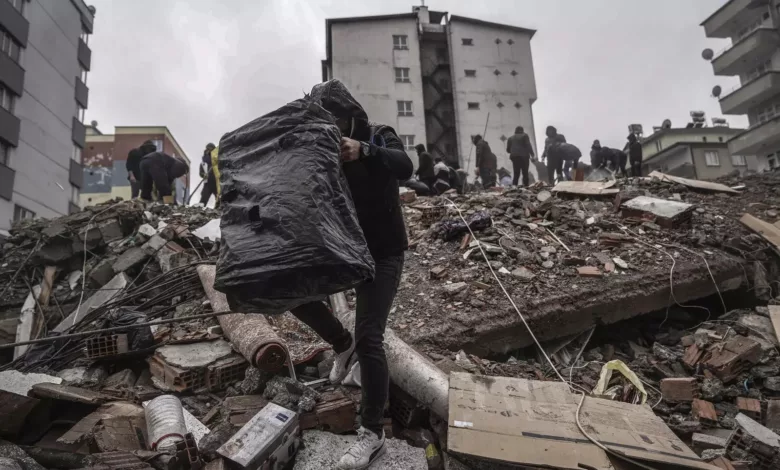Turkey Earthquakes 2023- Are buildings to blame?

Two large earthquakes struck Turkey, killing hundreds and injuring or displacing an unknown number of people. According to the Turkish authority, 3,450 establishments were destroyed, adding to the disaster. Many contemporary buildings have collapsed in a “pancake mode” of structural failure.
The series of Earthquakes in Turkey.
- The first quake, at Gaziantep near the Syrian border, registered 7.8 on the Richter scale and was felt distant apart till the United Kingdom.
- The second happened nine hours later, on what looks to be an intersecting fault, and measured 7.5 on the Richter scale.
The geographical location of Turkey and the history of Earthquakes.
Three tectonic plates are rubbing up against one another beneath the Earth’s surface in this seismically active region, which includes Turkey. Turkey’s seismic history may be traced back at least 2,000 years to an earthquake that struck the country in the seventeenth CE and left a dozen of cities in ruins.

The Arabian and Anatolian tectonic layers, which collide at a pace of 6 to 10 mm annually, are separated by the East Anatolian Fault zone. And this is the main zone where the earthquakes were got triggered. Intermittent earthquakes, which took place for millions of years, relieve the elastic strain that has accumulated in this plate border zone. As a result, the latest earthquakes come as no surprise.
Despite it being well equipped with seismic risk, Turkey has a substantial amount of sensitive infrastructure. We’ve learned a lot about building arrangements that can withstand even the most violent earthquakes during the last 2,000 years. However, a variety of factors influence building construction processes in this habitat and others throughout the world.
What caused this to occur? Is the problem with the structural system or the earthquake’s immense magnitude and violence?
Poor building quality is a well-known problem.
Many of the fallen structures seem to have been constructed of concrete with insufficient seismic bracing. Seismic construction rules in this location advise that these structures should be able to withstand significant earthquakes — when the Earth accelerates by 30% to 40% of normal gravity — without completely failing.
The 7.8 and 7.5 magnitude earthquakes occur to have generated shaking in the 20 to 50% gravity range. As a result, with shaking intensities lower than the “design code,” part of these establishments failed.
In Turkey and worldwide, there are well-known issues with guaranteeing safe building construction and conformance to seismic building rules. In earlier earthquakes, similar construction catastrophes happened in Turkey.
In 1999, a massive earthquake in Izmit killed 17,000 people and destroyed up to 20,000 structures. Following the 2011 earthquake, Turkey’s then-prime minister, Recep Tayyip Erdogan, blamed substandard buildings for the high death toll, stating, “Municipalities, builders, and supervisors should now recognize that their incompetence equates to murder.”
Reconstruction.
Even though Turkish officials are aware that many establishments are dangerous in earthquakes, solving the pain remains tough. Since many of the structures have already been built, modification in them may be expensive or given lower priority than other socioeconomic issues.
However, rebuilding after the quake may offer the opportunity to do it more safely. In 2019, Turkey implemented new regulations to ensure that buildings are better prepared to withstand earthquakes.
While the new restrictions are laudable, it is unclear if they will result in meaningful improvements in construction quality. Both earthquakes are believed to have generated a slew of environmental consequences, including ruptured ground surfaces, liquified soil, and landslides, in addition to the significant casualty of life and infrastructure damage. Because these consequences may make many locations dangerous to rebuild on, restoration efforts should involve considerations about what may be put where to reduce future perils.
For the time being, aftershocks continue to batter the region, and search and rescue activities are ongoing. After the dust settles, rehabilitation will begin, but will we see stronger structures that can resist the next quake, or will we witness more of the same?
The extent of damages incurred.
The first earthquake, which was followed by another of about the same size, was huge by any standard. Buildings directly on the fault line were almost certainly doomed to collapse. However, many structures across the region stayed sturdy, sparing the lives of their residents, while others next door fell, pointing to shoddy construction techniques as the primary cause of death. We will need more time to comprehend completely how human shortcomings may have led to the loss of life. However, preliminary signs raise concerns.
The last call.
Buildings crumbled, natural gas pipelines caught fire, airports were damaged, and highways were ripped apart. Nature is the supreme equalizer. Thousands of Turks, rich and poor, were buried beneath the wreckage in subzero temperatures. Some died where they might be, while others waited for help.

One part of the plot involves a natural calamity. The other is Turkey’s reliance on construction-driven economic development, nepotism, and propensity to disregard its building norms. The first had to happen. Did the second result in a large number of casualties? At the very least, the Turkish people will have every right to demand that question be thoroughly investigated. Is that the price the human race must pay for development and construction?
Edited by Prakriti Arora







